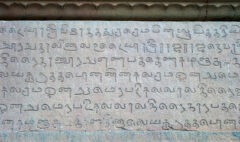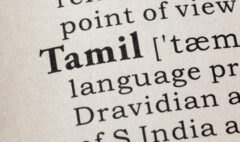How to Write a Formal Letter of Apology in Tamil
How to Write a Formal Letter of Apology in Tamil
How to Write a Formal Letter of Apology in Tamil
In both our personal and professional lives, there are moments when we need to express regret or apologize. It’s a fundamental part of respectful communication. While saying “sorry” in casual conversation is straightforward, writing a formal letter of apology requires a nuanced understanding of language, tone, and cultural etiquette. This guide will walk you through the essential steps of writing a letter in Tamil, providing you with the necessary `formal Tamil phrases` to draft a sincere and respectful message. Whether you are apologizing to a colleague, a client, or a family elder, this guide will provide you with the tools for `professional communication` and a truly heartfelt apology.
At Powerkid Tamil, we believe that a complete language education includes the ability to communicate respectfully in a formal setting. By mastering this skill, you are not just learning to write; you are learning to build and maintain strong relationships. This is a key part of your journey toward true fluency and cultural competence.
The Art of the Formal Apology in Tamil
In Tamil culture, apologies are often expressed with great humility and respect. The focus is on acknowledging your mistake, expressing sincere regret, and taking responsibility for your actions. A well-written formal apology is a powerful tool for repairing a relationship, building trust, and showing that you are a person of integrity. It is an act of `professional communication` that demonstrates your respect for the other person and your commitment to a positive relationship.
This guide will provide you with a step-by-step approach to drafting a formal apology in Tamil, ensuring that every word you write is sincere and meaningful. We will cover the key parts of a formal letter, from the salutation to the closing, and provide you with a list of essential `formal Tamil phrases` that you can use in your letter.
Step 1: The Salutation
The salutation sets the tone for your entire letter. It is a sign of respect and formality. Here are some options for your salutation:
- மதிப்பிற்குரிய திரு/திருமதி (Mathippirkuriya Thiru/Thirumathi): Respected Mr./Mrs. (This is a standard formal salutation.)
- அன்புள்ள ஐயா/அம்மா (Anbullai Ayya/Amma): Dear Sir/Madam. (This is a slightly less formal but still respectful option.)
Step 2: The Apology
The apology should be direct, sincere, and humble. Here are some essential `formal Tamil phrases` that you can use to express your regret:
- “என் தவறை நான் ஒப்புக்கொள்கிறேன்.” (En thavarai naan oppukkollukiren.): I admit my mistake.
- “நான் செய்த காரியத்திற்காக வருந்துகிறேன்.” (Naan seidha kaariyathirkaga varundhugiren.): I regret my action.
- “நான் உங்களிடம் மன்னிப்பு கோருகிறேன்.” (Naan ungalidam mannippu korukiren.): I am asking for your apology.
- “நான் செய்த தவறால் உங்களுக்கு ஏற்பட்ட அசௌகரியத்திற்கு வருந்துகிறேன்.” (Naan seidha thavaraal ungalukku yerpatta asaukharyaththirku varundhugiren.): I regret the inconvenience my mistake has caused you.
Step 3: The Explanation (Optional)
A brief explanation can be included to provide context, but it should not be an excuse. The focus should remain on your apology. You can use phrases like:
- “அந்த நேரத்தில் நான் இதை சரியாகப் பார்க்கவில்லை.” (Andha nerathil naan idhai sariyaaga paarkkavillai.): At that time, I did not see this correctly.
- “இது என் கவனக்குறைவால் நடந்தது.” (Idhu en kavana kuraivaal nadanthadhu.): This happened due to my carelessness.
These phrases should be used with a tone of humility, not to deflect blame. The goal is to show that you understand the reason for your mistake and are committed to not repeating it.
Step 4: The Promise to Improve
A good apology is not just about expressing regret; it is about a commitment to improvement. You can use phrases like:
- “இது மீண்டும் நடக்காது என்று உறுதியளிக்கிறேன்.” (Idhu meendum nadakkaadhu endru urudhiyalikkiren.): I promise that this will not happen again.
- “நான் இந்த அனுபவத்திலிருந்து கற்றுக் கொண்டேன்.” (Naan indha anubavaththilirundhu katrukkonden.): I have learned from this experience.
- “இதை சரிசெய்ய என்னால் முடிந்ததைச் செய்வேன்.” (Idhai sari seiya ennaal mudinthathai seiven.): I will do my best to correct this.
Step 5: The Closing
The closing of a formal letter should be respectful and sincere. Here are some options:
- தாங்கள் உண்மையுள்ள (Thangal unmaiyulla): Yours sincerely / Truly yours
- இப்படிக்கு (Ippadikku): Sincerely yours
- நன்றி (Nandri): Thank you
Follow your closing with your full name and a signature if it is a physical letter. This completes the process of writing a letter in Tamil that is both professional and heartfelt.
Conclusion
Learning how to write a formal letter of apology in Tamil is a significant milestone in your language journey. It is a skill that will empower you to communicate respectfully in any setting, and it is a powerful tool for building and maintaining strong relationships. By using these `formal Tamil phrases`, you are not just expressing regret; you are showing that you are a person of integrity who respects the local culture.
At Powerkid Tamil, our expert tutors can help you master this skill with a personalized learning plan. We can guide you through the process of writing a letter in Tamil, ensuring that every word you write is sincere and meaningful. We are committed to helping you communicate with confidence and grace. Start your lesson today and master the art of professional communication in Tamil!










